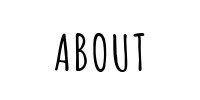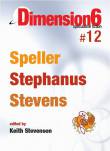Oh hi, didn’t see you there! If you are looking for basic knowledge and understanding about basic punctuation, you came to the right place! We hope that these information will help to build a better understanding, so you can master on each and every one of it more! Below, we have 8 of the basic punctuation that are put together briefly. Hopefully these brief information are easy to read and understand.
LET’S BEGIN








Have you ever heard about a full stop?
The symbol of full stop is (.). Full stop is a punctuation mark which indicates a strong pause. Full stop can be used to end a sentence. In this function, full stop is usually placed at the end of a complete sentence. The pattern is:
(Complete sentence)+(.)
Example: I want to go to library this afternoon.
A full stop is not necessary if the sentence ends with other punctuation mark, such as: question mark or exclamation mark.
Full stop also can be used to be placed after abbreviations.
For example: e.g., etc., no. 1
Full stop is used in a direct speech. It is normally placed inside the quotation mark.
For example: “You should not speak in this corridor.”
However, if the quotation is part of another statement, you should put full stop outside the quotation mark.
For example: Sam said, “They are coming”.
There are some important notes that you need to remember about full stop:
- Full stop is not required after sub-headings, titles, or headings: Conclusion, Charlie and The Chocolate Factory, Industrial Policy Report.
- Full stop is not necessary following common titles that are shortened forms of a word: Mr – Mister, Dr – Doctor, St – Street.
- Full stop is not necessary after the capital letters used as abbreviations for titles of organizations and countries: USA (United States of America), UNO (United Nations Organizations).
- Full stop is not used where the initials of a standard work of reference are used as an abbreviated title: OED (Oxford English Dictionary).
That’s all the information about full stop. I hope this information can help to increase your knowledge about full stop. Thank you for reading!
Comma is the next punctuation that will be discussed.
What is a Comma exactly?
A comma is a punctuation mark (,) that shows a small pause between parts of a sentence. It can also separate items in a list or used to mark the place of thousands in a large numeral. (definition)
There are different ways of using a comma, some general ones are discussed here:
Example: “I did all my homework, so I have a lot of free time.
“I did all my homework” and “I have a lot of free time” are both independent clauses because they can stand on their own and the sentence will still make sense. “So” is the conjunction connecting both the independent clauses together, so just insert a comma before the conjunction.
Example: When I did my homework, I received an email.
“When I did my homework” is a dependent clause because it cannot stand on its own, it doesn’t make sense alone, and it sounds incomplete. Insert a comma after the dependent clause, and continue with an independent clause.
Example: I bought a pencil, a notebook, a folder, a stapler, and a marker.
Insert a comma after each item to separate the different items in a list/series.
“Finally, she arrived home.”
Insert a comma after an adverb that begins a sentence, in this case ‘finally’. This rule also applies to “on the other hand” or “however” or many others.
Example: “I work at 300 Park Ave. South, New York, N.Y. 12312.”
“Cleveland, Ohio, is an awesome city!”
“December 13, 2013, was an amazing day.”
Even if you add a weekday, keep the comma after “2015.”
“Wednesday, December 13, 2015, was an amazing day.”
You don’t need to add a comma when the sentence has only the month and year.
“December 2015 was an amazing month.”
“Yes, I hit a car while I was driving.”
“No, the driver wasn’t mad at me.”
Insert a comma after the word “yes” or “no.”
Example: 10,000 or 2,456,745.
Woohoo! I hope this summarized information about commas helped you a lot. Thanks for reading and keep scrolling!
Do you all know what is Exclamation Mark? The exclamation mark is one of the punctuation marks in English which can be seen in the symbol of (!) and it is basically used at the end of a sentence.
It can turn a simple indicative or declarative sentence into a reflect an emotional feeling. It can also indicate questions that are lack of certainty.
Here are some extra notes for you guys: Do not use an exclamation mark in texts that are neither literary dialog nor personal expressive writing. It is inappropriate to put an exclamation mark in formal writings such as a business resume, school book report, or a due college paper as the style expected in these should be objective, standard, and informative. Using an exclamation mark in such settings will create an impression of unwarranted exaggeration, which in turn is seen as marketing oriented or just actually childish.
The followings are some examples of exclamation marks used to give a strong command or reflect an emotional feeling as well as questions that are lack of certainty:
- Shock : “Oh my God!”
- Excitement : “What a happy day!”
- Command : “Drive carefully! Watch out for traffic signs!”
- Uncertainty : “What is happening?!”
Well, that’s all of the information about the exclamation mark that I can give to you. I hope it will help you a lot so that you can put all the exclamation marks appropriately and effectively. Thanks for reading!
Hey there! Do you know what is Question Mark?
The question mark is one of the punctuation marks in English which can be seen in the symbol of (?) and it is usually put at the end of a sentence.
It is used when there is necessity to make an interrogative sentence in which the speaker is seeking for information. It can also be used when the speaker is hoping for a certain reply.
Here are some extra notes: Do not use a question mark in sentences that do not need any information to be given. In addition, the question mark cannot be put if the sentences do not require any answer to be replied.
The followings are some examples of how the question mark is used to ask for information as well as to hope for a certain reply:
- Ask for information : “Do you know this place?”
- Hope for a certain reply : “When are you going to visit me?”
That is it! I hope it will help you a lot so that you can put all the question marks appropriately and effectively. Thanks for reading!
What is a Quotation Mark?
Quotation mark is a punctuation mark (“ “) to set off and represent exact language (either spoken or written) that has come from somebody else. The quotation mark is also used to designate speech acts in fiction and sometimes poetry.
Direct Quotations
Direct quotations involve incorporating another person’s exact words into your own writing.
Example: John said, “I hate sushi.”
Example: “I wasn’t sure of my answer,” John said, “but I said it out loud confidently.”
Indirect Quotations
Indirect quotations are not exact wordings but rather rephrasing or summaries of another person’s words. In this case, using quotation mark is not necessary.
Example: John said that he hates sushi.
Use an indirect quotation when you need to summarize details of the text.
That’s a wrap for quotation mark! Hopefully this summary is really understandable for you to take in. Thank you for taking your time to read!
Have you ever heard about a semicolon?
Semicolon is a punctuation mark that has three functions. The symbol of semicolon is (;).
The first function is to connect to related sentences.
The pattern is:
(Complete Sentence) + ( ; ) + (Complete Sentence)
Example: My father fixes his car; my brother helps him preparing the tools.
The second function is to connect two sentences close in meaning. In this function, a semicolon usually team up with a conjunctive adverb.
The pattern is:
(Complete Sentence) + ( ; ) + (conjunctive adverb) + , + (Complete Sentence).
Example: My father fixed his car three times; however, the car is still broken.
The third function is to avoid confusion when you have complicated list of item.
The pattern is:
(Item) + , + (More Information) + ( ; ) + (Item) + , + (More Information) + ( ; ) + (and) + (Item) + , + (More)
Example: My friends are coming from different cities and countries, such as Bali, Indonesia; Kuala Lumpur, Malaysia; Hanoi, Vietnam; and Manila, Philippine.
There are some important notes that you need to remember:
- The two main clauses that the semicolon joins should have close meaning.
- Don’t capitalize the word that follows the semicolon unless that word is a proper noun.
- Limit your use of semicolon. You should not scatter them wantonly throughout your writing.
You can use it for special occasion.
Well that’s all the information about semicolon. I hope this information can be useful for you. Thank you for reading
Moving on, here is a very brief explanation of Colon
The function is to introduce an item or a series of items. Do not capitalize the first item after the colon and don’t forget to insert the punctuation (.) at the end of the sentence.
Examples:
You know what to do: practice.
You should bring many things: sleeping bags, flashlight, and warm clothing.
I bought these items: salt, sugar, and pepper.
I need someone who can help me do these things: sweep floor, make beds, and wash dishes.
Even though this was a very brief explanation, hopefully this will at least capture the main idea of a colon. Thank you for reading!
Now, let’s learn what an apostrophe is and how is it used in our daily speech. An apostrophe is added to all nouns ending in s. And some has an apostrophe + s to every proper noun
Example: Hastings’s or Jones’s.
One method, common in newspapers and magazines, is to add an apostrophe + s (‘s) to common nouns ending in s, but only a stand-alone apostrophe to proper nouns ending in s.
Example:
the class’s hours
Mr. Jones’ golf clubs
the canvas’s size
Texas’ weather
If talking about a pen belonging to Mr. Hastings, many people would wrongly write Mr. Hasting’s pen (his name is not Mr. Hasting).
Correct: Mr. Hastings’ pen
Another widely used technique is to write the word as we would speak it. For example, since most people saying “Mr. Hastings’ pen” would not be written an added s, we would write Mr. Hastings’ pen with no added s. But most people would pronounce an added s in “Jones’s,” so we’d write it as we say it: Mr. Jones’s golf clubs. This method explains the punctuation of for goodness’ sake.
That is what we have for colon, hope you got something out of this. Thanks for reading!
Yes, you’ve reached the end! We really appreciate you taking your time to read what we have put here. If you enjoy and like this, please share this with your friends and family, or anyone that wants to learn the basic punctuation. Hopefully we fulfilled helping you solve your problems! See you next time…
Advertisements Share this:




